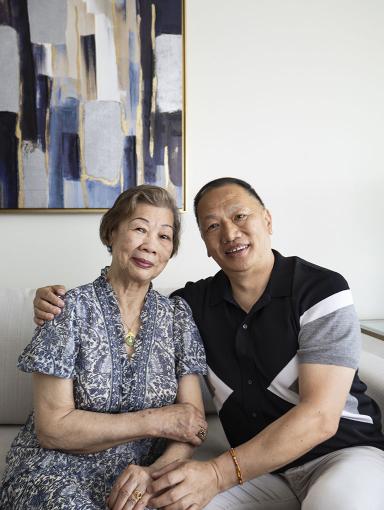New Study Finds Screening of Osteoporosis Lags Behind Other Diseases
New study finds bone density screenings for women over 65 years have dropped, especially for Black women; lack of post-fracture care puts patients at risk
A new perspective article published in the Lancet Diabetes & Endocrinology has highlighted that screening and treatment of osteoporosis lags behind other diseases, resulting in significant morbidity, mortality, and economic costs.
Over the past 30 years, there has been tremendous progress in the ability to diagnose osteoporosis, a disease that was once considered an inevitable consequence of aging that weakens bones and can reduce mobility, cause pain, and increase mortality. Unfortunately, despite that progress, the use of dual-energy x-ray absorptiometry (DXA) and fracture risk assessments – tests that can accurately diagnose osteoporosis and determine the likelihood of having a hip or other bone fracture, has been on the decline. According to the perspective, the use of DXA in women 65 years and older has dropped to 11.3% in 2014, down from 13.2% from five years earlier. The decline coincided with a 70% reduction in Medicare reimbursements for office-based scans.
Entitled, “Osteoporosis in the USA: prevention and unmet needs,” the review highlighted that many at-risk patients are not advised to take preventive medications, and may be unduly frightened to take them. Failures in primary prevention of osteoporosis are compounded by inadequate post-fracture follow-up care. The review noted that following a fracture, patients are not being treated with effective medications, which contrasts with the treatment of patients after a heart attack. Of patients who had an acute myocardial infarction (AMI), 96% received standard-of-care medication while only 30% of women 66 years or older received standard-of-care medication to treat osteoporosis in the 12 months after their fracture.
“Furthermore, studies have shown significantly lower screening with bone density scans and treatment in non-Hispanic Black women, with estimates of a disparity in comparison to non-Hispanic White women as high as 20%. This disparity is also present in post-fracture diagnosis and treatment,” said co-author Douglas P. Kiel, M.D., M.P.H., Director, Musculoskeletal Research Center and Senior Scientist, Hinda and Arthur Marcus Institute for Aging Research, Hebrew SeniorLife and Professor of Medicine, Harvard Medical School. “Our review underscored some myths regarding osteoporosis patients. Osteoporosis is thought to affect non-Hispanic White and Asian women, and that may be why screening, prevention and post-fracture treatment of non-Hispanic Black women is so much lower.”
According to the perspective, the reduction of Medicare reimbursement for DXA also has disenfranchised rural communities. “Understanding the impact of access to osteoporosis screening and treatment will help the country reduce disparities in care,” Dr. Kiel added. “Major holes remain in the how the U.S. serves patients with this important age-related chronic disease, and it’s clear we need to address the disparity of and access to standard-of-care.”
One other challenging factor is that currently there is no clear option for the primary prevention of osteoporosis. Estrogen had been widely used in younger post-menopausal women who had risk factors for osteoporosis but a study by the Women’s Health Initiative raised concerns about its long-term safety, which has left a gap in treatment options.
The Mayo Clinic and American Society for Bone and Mineral Research, University of Alabama collaborated in this perspective article.
Other authors included: Sundeep Khosla, M.D., head of the Osteoporosis and Bone Biology Laboratory, Mayo Clinic Kogod Center on Aging; Ann L Elderkin, P.A., Former Executive Director, American Society for Bone and Mineral Research (ASBMR); and Nicole C Wright, Ph.D., M.P.H., Assistant Professor in the Department of Epidemiology, the University of Alabama at Birmingham (UAB).
About Hebrew SeniorLife
Hebrew SeniorLife, an affiliate of Harvard Medical School, is a national senior services leader uniquely dedicated to rethinking, researching, and redefining the possibilities of aging. Hebrew SeniorLife cares for more than 3,000 seniors a day across six campuses throughout Greater Boston. Locations include: Hebrew Rehabilitation Center-Boston and Hebrew Rehabilitation Center-NewBridge in Dedham; NewBridge on the Charles, Dedham; Orchard Cove, Canton; Simon C. Fireman Community, Randolph; Center Communities of Brookline, Brookline; and Jack Satter House, Revere. Founded in 1903, Hebrew SeniorLife also conducts influential research into aging at the Hinda and Arthur Marcus Institute for Aging Research, which has a portfolio of more than $63 million, making it the largest gerontological research facility in the U.S. in a clinical setting. It also trains more than 1,000 geriatric care providers each year. For more information about Hebrew SeniorLife, visit our website or follow us on our blog, Facebook, Instagram, Twitter, and LinkedIn.
About the Hinda and Arthur Marcus Institute for Aging Research
Scientists at the Marcus Institute seek to transform the human experience of aging by conducting research that will ensure a life of health, dignity, and productivity into advanced age. The Marcus Institute carries out rigorous studies that discover the mechanisms of age-related disease and disability; lead to the prevention, treatment, and cure of disease; advance the standard of care for older people; and inform public decision-making.
